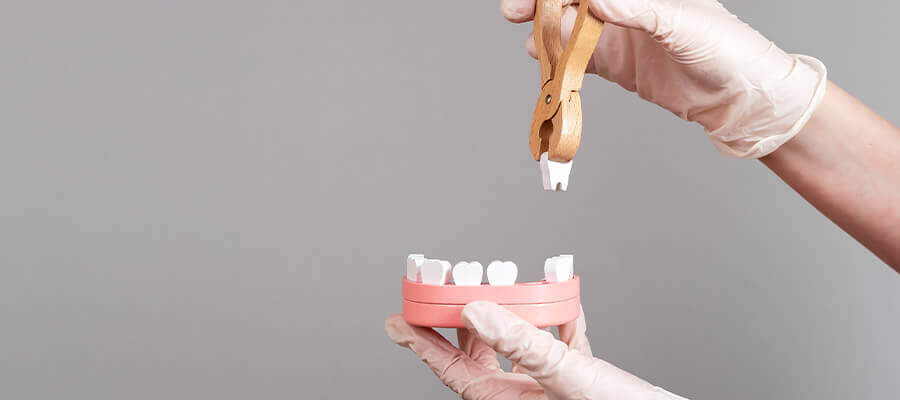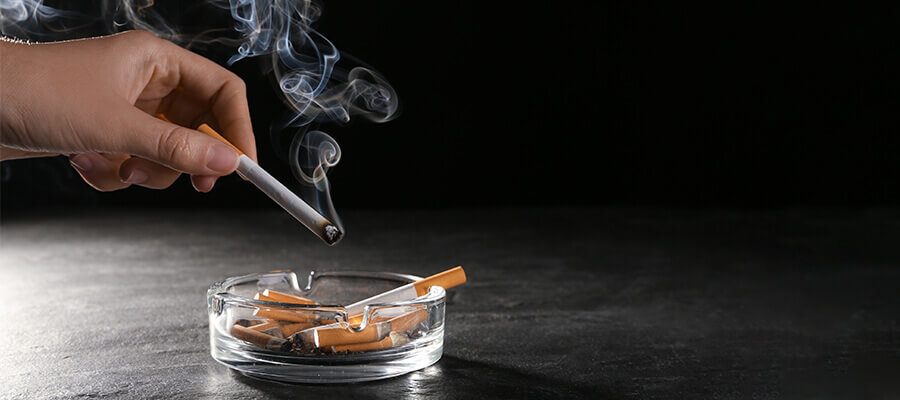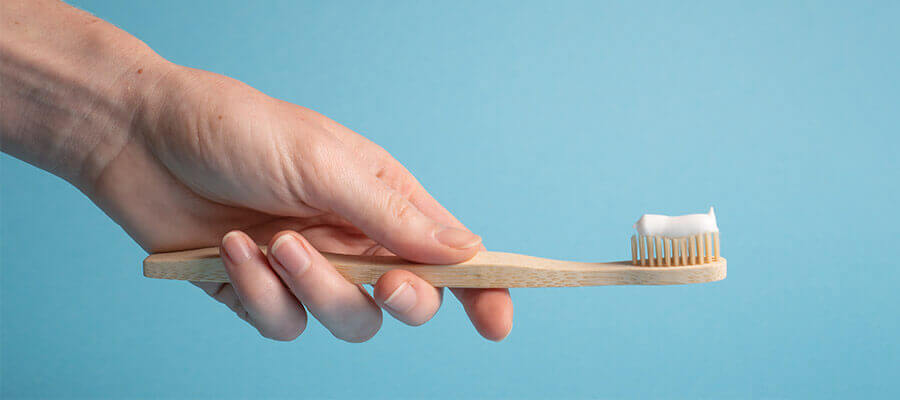Tooth extraction – that is, the removal of the entire tooth – is one of the common dental interventions. It may be needed for a number of reasons, such as decay or serious injury.

When might a tooth extraction be necessary?
The goal of conservative dentistry is to save your own teeth whenever possible. However, it may happen that the treatment for this – for example filling, root canal treatment or placing a dental crown – is no longer enough. If one or more teeth have suffered irreparable damage, it may be necessary to remove them. The dentist may recommend tooth extraction, for example, due to severe tooth decay or gum disease, injury, congestion, or obstructed tooth growth.

How does tooth extraction take place?
As a first step, local anesthesia is applied to the affected tooth and the surrounding tissues. (If the patient so wishes or other circumstances justify it, tooth extraction can even be performed under anesthesia.)

We carefully loosen the tooth with special tools and remove it from the tooth bed. In some cases, a gingivectomy – i.e. surgical tooth removal – may be necessary to bring it to the given tooth, especially in the case of a wisdom tooth, severe caries or a fracture below the gum line.After removing the tooth, the tooth bed is cleaned and disinfected. Finally, stitches can be used to aid healing, but this is not always necessary.

What happens immediately after tooth extraction?
We place a piece of gauze over the tooth and ask the patient to bite down on it continuously for about 20 minutes, applying constant pressure to the wound. This contributes to blood coagulation, more precisely to the formation of a platelet plug that stops bleeding. The piece of gauze can be removed as soon as the bleeding has subsided enough. Light bleeding may still occur within the next 24 hours.

What should not be done after tooth extraction?
Since the blood clot that forms at the site of the removed tooth promotes healing, you should not poke it or reach into the wound. This can have painful consequences, and can even lead to inflammation that requires further intervention. It is forbidden to suck, spit or gargle the area of the tooth, as this can also damage the blood clot. It is worth paying attention to careful sneezing and blowing your nose in the first days, especially after the removal of an upper tooth, which can also affect the sinus. Sneezing with your mouth closed, seawater nose drops, and wiping your nose instead of blowing all contribute to faster recovery.

Smoking is strictly prohibited at least until the wound is closed due to the suction effect and toxins. You can drink liquids at any time, but eat only after the painkiller wears off, otherwise the bite may cause injury.
Contrary to popular belief, it is recommended to eat normal-textured foods instead of pulpy ones, as the pulp sticks to the wound more easily. Plant-based dairy products, pastries, steamed and fried vegetables and fruits, steamed or well-done meats, grilled dishes, soups without milk and cream, non-spicy and non-creamy pasta dishes, without milk or egg dressings are excellent choices. salads, biscuits and sponge cakes.

It is extremely important to maintain proper oral hygiene. The area around the wound can be cleaned with an extra soft toothbrush without pressing the bristles into the wound.
Full recovery usually takes 2-3 weeks. During the first 5 days, sports and hard physical work, including housework involving exertion and bending, are prohibited. Saunas, hot baths, beaches and sunbathing can also hinder healing during this period.